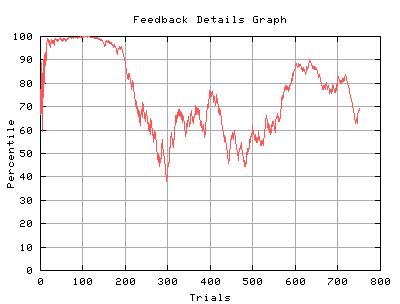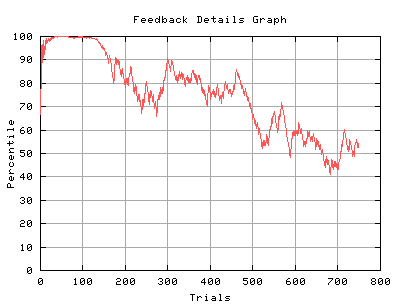



Successfully applying precognition to the stock market is the primary goal of the AVM Project. P-I-A has completed its first formal online experiment where 7 participants were paid to submit 500 AVM predictions each. The participants were free to use whatever protocol they preferred within the framework of the P-I-A Online Protocol-1. The participants will all be referred to as viewers, since in all cases their objective is to successfully view the A, V, or M nature of a future photo-target identified with an AVM-ID number.
Here's a very brief summary of results, followed by some of the details:
The group performance on 3,500 predictions (7 viewers doing 500 predictions each) was just about what you would expect based on chance. There were two instances where the group produced a very high "prediction cluster", at the 99.4 percentile based on chance, and both of these predictions were successes. Also, two viewers achieved the 99.8 percentile in their first 100 predictions during their dry-run period...was this "beginner's luck"?
PIA believes that the essence of precognition is the ability of each viewer to establish communication between the subconscious and conscious aspects of his/her self. Therefore, we rely on the viewers to nurture, improve, and ultimately develop these lines of communication. We establish an overall protocol that provides a structure for submitting specific AVM Predictions. These parameters for Protocol-1 were as follows:
| Number of Daily Predictions | 50 |
| Total Number of Days | 10 (Mon - Fri) |
| Total Number of Predictions | 500 |
| Starting Date | 3/13/00 |
| Ending Date | 3/24/00 |
| Starting AVM Target ID# | 15065 |
| Ending AVM Target ID# | 15564 |
While each of the 500 AVM targets were independent, they were randomly "associated" with Investment Targets in groups of 5. The specifics are not known to any of the viewers. An analyst may use these data to make investment decisions. Here is a specific example:
|
So, the 500 predictions by each participant were associated with 100 Investment Targets. And since we had 7 participants, there were generally 35 independent predictions associated with each Investment target.
Investment decisions could thus be made based on the "clustering" of the group predictions. By clustering, we mean an unusually high number of Up, Down, or Neutral "group predictions". For example, the percentile associated with getting a cluster of 20 predictions to agree when there are a total of 35 predictions submitted is 99.4. This was the most improbable clustering that occurred, and as you will see below, there were two examples.
The following table shows the Invest_ID number and related investment info including the actual Up, Down or Near-Neutral group-prediction, which was also the actualized result.
| Invest_ID | StartDate | EndDate | delta | Up, Down, or Neutral Cluster |
| 125 | 3/23/00 | 3/24/00 | 0.953 | Down |
| 130 | 3/23/00 | 3/28/00 | 1.957 | Neutral |
The following table shows the number of predictions in the cluster by viewer. Remember that each viewer submitted 5 predictions for each Investment Target.
| User_ID | Invest_ID = 125 | Invest_ID = 130 |
| 1 | 2 | 3 |
| 2 | 4 | 2 |
| 3 | 4 | 2 |
| 4 | 2 | 3 |
| 5 | 3 | 3 |
| 6 | 2 | 4 |
| 7 | 3 | 3 |
| Total | 20 | 20 |


We will continue to share information concerning our results as part of our educational mission. We believe that precognition will be part of a paradigm shift to a new worldview where information about remote events (past, present and future) will be recognized as being available to trained viewers. These viewers will become members of a new profession and integrated into our society. We believe that the information concerning this paradigm shift should be made as public as possible to encourage the maximum participation...we are indeed all in this together, whether we know it or not.
Go to another section of this issue:
Physics: The SubConscious (SC) and the Self Intuition: The SubConscious and an Ongoing Precognition Experiment
![]()